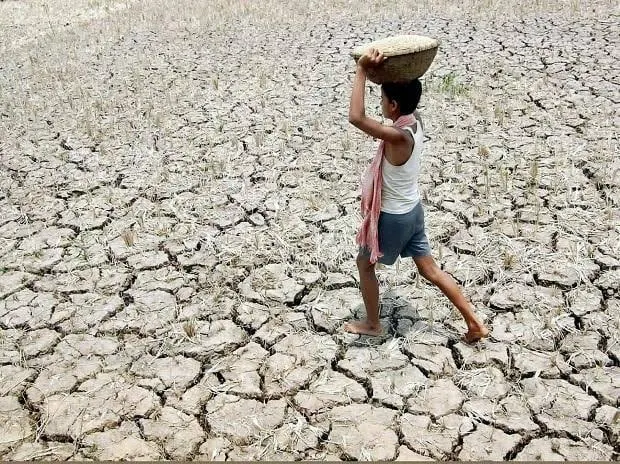Desertification is emerging as one of the gravest environmental challenges of our time. Marked annually on June 17, the World Day to Combat Desertification and Drought reminds us that the fate of our planet’s land—and the billions who depend on it—is hanging in the balance.
Dryland ecosystems, which cover more than one-third of the Earth’s land surface, are highly vulnerable to overexploitation and unsustainable land use. Desertification refers to land degradation in arid, semi-arid, and dry sub-humid regions, largely caused by human activities and climate change. Ironically, those who suffer the most are also among the world’s poorest.
Healthy land is the foundation of prosperous economies. Over half the global GDP depends on nature. Yet, we are depleting this natural capital at an alarming pace, leading to biodiversity loss, worsening drought risks, and forced displacement. With 95% of our food grown on soil, the degradation of one-third of all agricultural land is a serious warning sign. Globally, 3.2 billion people—mainly rural communities and small farmers—are directly impacted by land degradation, increasing hunger, poverty, unemployment, and migration.
To address this crisis, sustainable land, soil, and water management is urgently needed—not only to boost food production and safeguard ecosystems, but also to build climate resilience among rural populations. Since the Rio Earth Summit of 1992, desertification—alongside climate change and biodiversity loss—has been recognized as one of the top barriers to sustainable development.
As of now, 20–40% of global land is already considered degraded. With 2021–2030 declared as the UN Decade on Ecosystem Restoration, we have reached the halfway mark. The time to accelerate our efforts to restore degraded lands is now.
India’s Alarming Land Degradation
India presents a particularly grave scenario. Soil in India is among the world’s most fragile. The average rate of soil erosion here is 20 tonnes per hectare per year, compared to the global average of 2.4 tonnes. Nearly 29.3% of India's land is currently undergoing degradation. States like Rajasthan, Maharashtra, and Gujarat together account for almost half of this degraded land. Jharkhand is the worst affected, with 68.77% of its land already degraded. Rajasthan follows with 62%.
Between 2003–05, degraded land in India stood at 94.53 million hectares. By 2018–19, this had risen to 97.85 million hectares—a loss of 3 million additional hectares in just 15 years. This is driven primarily by climate change, human activity, and natural disasters. As a result, barren lands are expanding, crop yields are falling, and poverty is deepening.
A recent Nature journal report published in 2025 warns that to achieve the UN's land degradation neutrality targets by 2030, India must urgently address gully erosion—where heavy rain washes away soil through narrow channels—in 77 districts. According to the report, “Gully erosion poses a significant barrier to India’s land degradation mitigation mission.” While the western states are seeing barren lands expand, gully erosion is wreaking havoc in the east, particularly in Jharkhand and Chhattisgarh, followed by Madhya Pradesh and Rajasthan.
Linking Soil Erosion to Rainfall
There is a direct link between rainfall intensity and soil erosion. A mere 1% increase in rainfall can result in a 2% rise in soil erosion. With scientists predicting a 10% increase in rainfall intensity by 2050, the erosion crisis could get worse if not addressed urgently.
This year, the Republic of Colombia is hosting the global observance of the World Day to Combat Desertification and Drought, emphasizing nature-based solutions to tackle land degradation.
What Can Be Done?
India must invest in sustainable land management and pastureland restoration. Key strategies include:
- Promoting vegetation cover and halting deforestation
- Implementing soil and water conservation structures like check dams
- Rehabilitating gully-affected areas by redirecting runoff and stabilizing slopes
- Encouraging low-till agriculture, contour bunding, terracing, and strip cropping to slow water runoff and prevent erosion
In regions with large swaths of barren land, we need targeted land restoration policies and practices that are both environmentally sound and socially inclusive. A national land management strategy must differentiate between badlands, eroded gullies, and their impacts on local communities and ecosystems.
India supports 18% of the world’s human population and 15% of its livestock, but it has only 2.4% of global land. This enormous pressure on limited land resources calls for urgent, war-like efforts to reclaim and protect our degrading soils.
Let us remember: when we lose fertile land, we lose more than soil—we lose our food security, livelihoods, and future. It is time to reverse this trend, one hectare at a time.
---
*President, Bargi Dam Displaced and Affected Union, Jabalpur


Comments